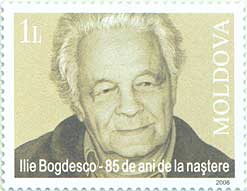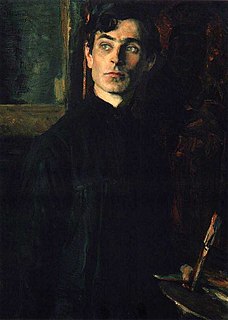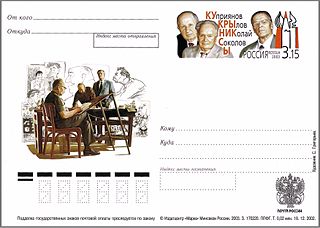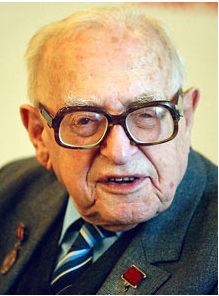 W
WAbram Efimovich Arkhipov was a Russian realist artist, who was a member of the art collective The Wanderers as well as the Union of Russian Artists.
 W
WMariam Arshaki Aslamazyan was a Soviet painter, recognized as a People's Artist of the Armenian SSR (1965) and People's Artist of the Soviet Union (1990).
 W
WEranuhi (Eran) Arshaki Aslamazyan was an Armenian and Soviet artist and graphic artist. She was a member of the Artists' Union of the USSR and an Honored Artist of the Armenian SSR.
 W
WZair Isaakovich Azgur was a Soviet and Belarusian sculptor active during the Soviet period. Born in Mogilev Governorate, he studied in that city from 1922 to 1925; from 1925 until 1928 he studied at the Vkhutein in Leningrad. He first exhibited in 1923. He was mainly active in Minsk, where among his projects was the creation of reliefs for the opera house. He created a series of portrait busts of war heroes and military figures during the 1940s. At the 1958 World's Fair in Brussels he won a silver medal for his statue of Rabindranath Tagore. Monuments to his design were erected at Luhansk in 1947; Minsk in 1947; Borodino in 1949; Suzdal in 1950; and Leninogorsk - a monument to Vladimir Lenin - in 1957. Later in his career he exhibited in Bucharest and Paris.
 W
WIlya Trofimovich Bogdesko was a Soviet and Moldovan graphic artist, People's Painter of the USSR (1963), member of the Academy of Arts (1988).
 W
WVasyl Zakharovych Borodai was a Soviet and Ukrainian sculptor, parliamentary, People's Painter of the USSR, academician of the Academy of Arts of the Soviet Union and Ukraine.
 W
WAleksandr Aleksandrovich Deyneka was a Soviet and Russian painter, graphic artist and sculptor, regarded as one of the most important Russian modernist figurative painters of the first half of the 20th century. His Collective Farmer on a Bicycle (1935) has been described as exemplifying the socialist realist style.
 W
WVladimir Andreyevich Favorsky was a Soviet graphic artist, woodcut illustrator, painter, muralist, and teacher. He was a People's Artist of the USSR from 1963 and a full member of Soviet Academy of Arts from 1962, as well as of the Four Arts society.
 W
WFyodor Fyodorovich Fedorovsky was a Soviet stage designer, People's Artist of the USSR (1951), and active member of the Soviet Academy of Arts, author of Kremlin stars.
 W
WAleksandr Mikhailovich Gerasimov was a Soviet and Russian painter. He was a leading proponent of socialist realism in the visual arts, and painted Joseph Stalin and other Soviet leaders.
 W
WSergey Vasilyevich Gerasimov was a Soviet and Russian painter.
 W
WIlya Sergeyevich Glazunov was a Soviet and Russian artist from Saint Petersburg. He was the founder of the Russian Academy of Painting, Sculpture and Architecture in Moscow where he also served as a rector up until his death. He held the title of People's Artist of the RSFSR.
 W
WIgor Emmanuilovich Grabar was a Russian post-impressionist painter, publisher, restorer and historian of art. Grabar, descendant of a wealthy Rusyn family, was trained as a painter by Ilya Repin in Saint Petersburg and by Anton Ažbe in Munich. He reached his peak in painting in 1903–1907 and was notable for a peculiar divisionist painting technique bordering on pointillism and his rendition of snow.
 W
WAleksei Mikhailovich Gritsai was a Soviet and Russian artist. From 1924 to 1931 he studied in Leningrad in the studios of S.M. Zaidenberg and from 1932 to 1939 at the Academy of Arts under P. S. Naumov, Vasily Yakovlev, and Isaak Brodsky.
 W
WLado Gudiashvili was a prominent Georgian artist of the 20th century. Gudiashvili was born into a family of a railroad employee. He studied in the Tbilisi school of sculpture and fine art (1910–1914), where he met the Armenian artist Alexander Bazhbeuk-Melikyan, and later in Ronson's private academy in Paris (1919–1926). For a while, Gudiashvili belonged to a group of Georgian poets called "The Blue Horns" (1914–1918), who were trying to connect organically the Georgian national flavour with the creative structure of French symbolism. In Paris, he was a constant customer of the famous "La Ruche," a colony of painters where he met Ignacio Zuloaga, Amedeo Modigliani, Natalia Goncharova, and Mikhail Larionov. Gudiashvili's work was greatly influenced by Niko Pirosmanashvili.
 W
WLev Efimovich Kerbel was a sculptor of Soviet realist works. Kerbel's creations included statues of Marx, Lenin, Yuri Gagarin, which were sent by Soviet Government as gifts to socialist and the Third World countries across the world.
 W
WYervand "Kochar" Kocharyan, also known as Ervand Kochar was a prominent sculptor and modern artist of the twentieth century and a founder of Painting in Space art movement. The Ervand Kochar Museum is located in Yerevan, Armenia and showcases much of his work.
 W
WPavel Dmitriyevich Korin was a Russian painter and art restorer. He is famous for his preparational work for the unimplemented painting Farewell to Rus.
 W
WBoris Danilovich Korolyov was a Soviet sculptor-monumentalist, teacher and public figure.
 W
WGeliy Mikhailovich Korzhev-Chuvelyov was a Russian painter.
 W
WThe Kukryniksy were three caricaturists/cartoonists in the USSR with a recognizable style.
 W
WSergey Dmitrievich Merkurov was a prominent Soviet sculptor-monumentalist of Greek-Armenian descent. He was a People's Artist of the USSR, an academic at the Soviet Academy of Arts, and director of the Pushkin Museum of Fine Arts from 1944 to 1949. Merkurov was considered the greatest Soviet master of post-mortem masks. He was the sculptor of the three biggest monuments of Joseph Stalin in the USSR.
 W
WVera Ignatyevna Mukhina was a prominent Soviet sculptor and painter. She was nicknamed "the queen of Soviet sculpture".
 W
WAndrei Andreevich Mylnikov was a Russian and Soviet painter and art educator, People's Artist of the Russian Federation, Stalin Prize winner, and Lenin Prize winner, who lived and worked in Saint Petersburg. He was a member of the Saint Petersburg Union of Artists, and professor of painting of the Repin Institute of Arts, regarded as one of the brightest representatives of the Soviet art, who played an important role in the formation of the Leningrad school of painting.
 W
WYuri Mikhailovich Neprintsev was a Soviet, later Russian, painter, graphic artist, art teacher, professor of the Repin Institute of Arts, People's Artist of USSR, and a member of the Academy of Arts of the USSR. He lived and worked in Leningrad and is regarded by art historian Sergei V. Ivanov as one of the brightest representatives of the Leningrad school of painting, most famous for his genre and battle paintings.
 W
WGeorgy Nissky was a prominent Soviet painter and a founder of the severe style. He was named a People's Artist of the USSR in 1965 and won a third degree Stalin Prize in 1951.
 W
WArkady Alexandrovich Plastov was a Russian socialist realist painter.
 W
WVasily Dmitrievich Polenov was a Russian landscape painter associated with the Peredvizhniki movement of realist artists. His contemporaries would call him the “Knight of Beauty” as he embodied both European and Russian traditions of painting. His vision of life was summarized as following: “Art should promote happiness and joy”. As a painter and a humanist, he would truly believe in the civilizing mission of Art, Culture and Education.
 W
WTahir Salahov was a Soviet, Azerbaijani and Russian painter and draughtsman. He was First Secretary of the Artists' Union of the USSR (1973–1992), Vice-President of the Russian Academy of Arts, member of over 20 academies and other creative organizations throughout the world, including academies of art of France, Spain, Germany, and Austria.
 W
WMartiros Saryan was an Armenian painter, the founder of a modern Armenian national school of painting.
 W
WMikhail Savitsky was a Belarusian painter. Born in 1922, he served on the Eastern Front in World War II from 1941, but was captured and not released until the end of the war. Some of the paintings Savitsky did were the 1967 Partisan Madonna and the picture cycle "Figures on the Heart." For his artwork, he was awarded the title Hero of Belarus in 2006.
 W
WJasef Alexandrovich Serebriany was a Soviet Russian painter and stage decorator, who lived and worked in Leningrad, a member of the Leningrad Union of Artists, People's Artist of the Russian Federation, professor of the Repin Institute of Arts, regarded as one of the leading representatives of the Leningrad school of painting, well known for his portrait paintings.
 W
WAlexander Maxovich Shilov is a prominent Soviet and Russian portrait painter.
 W
WUral Tansykbaevich Tansykbayev was an Uzbek painter of Kazakh descent. He was named a People's Artist of the USSR and People's Artist of the Uzbek SSR in the category visual art.
 W
WZurab Konstantinovich Tsereteli is a Georgian painter, sculptor and architect known for large-scale and at times controversial monuments. Tsereteli has served as the President of the Russian Academy of Arts since 1997.
 W
WSimon (Soliko) Virsaladze was a Georgian and one of the Soviet Union's leading designers of ballet, film and opera. He also worked as collaborator with the founders of Georgian National Ballet company, Iliko Sukhishvili and Nino Ramishvili, in the creation of classic Georgian costumes.
 W
WYevgeny Viktorovich Vuchetich was a prominent Soviet sculptor and artist. He is known for his heroic monuments, often of allegoric style, including The Motherland Calls, the largest sculpture in the world at the time.
 W
WTetyana Nilivna Yablonska was a Ukrainian painter. Her early vital pictures are devoted to work and a life of Ukrainian people. She has passed to generalizing images of the nature, differing a subtlety of plastic and color rhythms.
 W
WBoris Yefimovich Yefimov was a Soviet political cartoonist best known for his critical political caricatures of Adolf Hitler and other Nazis produced before and during the Second World War, and was the chief illustrator of the newspaper Izvestia. During his 90-year career he produced more than 70,000 drawings.
 W
WVecheslav Frantsevich Zagonek was a Soviet, Russian painter, People's Artist of the USSR, Member of the Academy of Arts of the USSR, who lived and worked in Leningrad. He was a member of the Leningrad Union of Artists and regarded as one of the brightest representatives of the Leningrad school of painting, most famous for his lyrical landscapes and genre paintings.
 W
WAntanas Žmuidzinavičius was a Lithuanian painter and art collector.